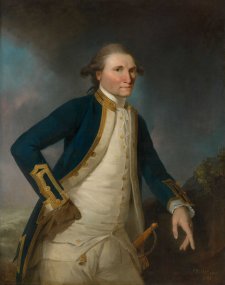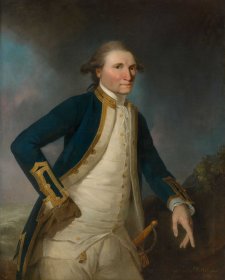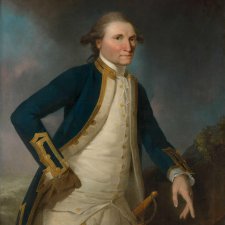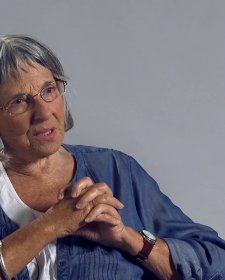- About us
- Support the Gallery
- Venue hire
- Publications
- Research library
- Organisation chart
- Employment
- Contact us
- Make a booking
- Onsite programs
- Online programs
- School visit information
- Learning resources
- Little Darlings
- Professional learning
Cook’s assassination in Kealakekua Bay, Hawai‘i, in 1779 produced an explosion of commentary, both in eighteenth-century popular culture and in twentieth-century historical scholarship. Cook had enjoyed a mostly warm welcome from Hawaiians when he revisited their islands in late 1778. When he had to return unexpectedly in February 1779, however, due to a broken mast, the reception was different. Cook may have been aware that earlier he had benefited from arriving during the carnivalesque season of peace called Makahiki. During this season, where all is upside down, ‘strangers’ are afforded the privileges of ‘natives.’ Even if Cook knew that his return in February now coincided with the new season of war, he may not have realised how deeply implicated his ships had become in the everyday cosmology of Hawai‘i. Cook’s changed cultural status, coupled with increasing reports of poor British behaviour, pushed Hawaiians to show their fresh displeasure with him. During one of many minor altercations, they stabbed and clubbed the captain to death.
Later commentators thought John Webber’s depiction showed Cook trying to halt British violence. Officer reports at the time suggest, though, that he was trying instead to call in the boat to rescue him.
Collection: National Portrait Gallery
Purchased with funds provided by Robert Oatley AO 2007
John Webber (age 33 in 1784)
Francesco Bartolozzi (age 57 in 1784)
William Byrne (age 41 in 1784)
Mr Robert Oatley AO (7 portraits supported)



On one level The Companion talks about the most famous and frontline Australians, but on another it tells us about ourselves.



11 January 2016
The National Portrait Gallery mourns the loss of one our most generous benefactors, Robert Oatley AO.



Betty Churcher describes the creation of the portrait of Captain James Cook in the National Portrait Gallery.